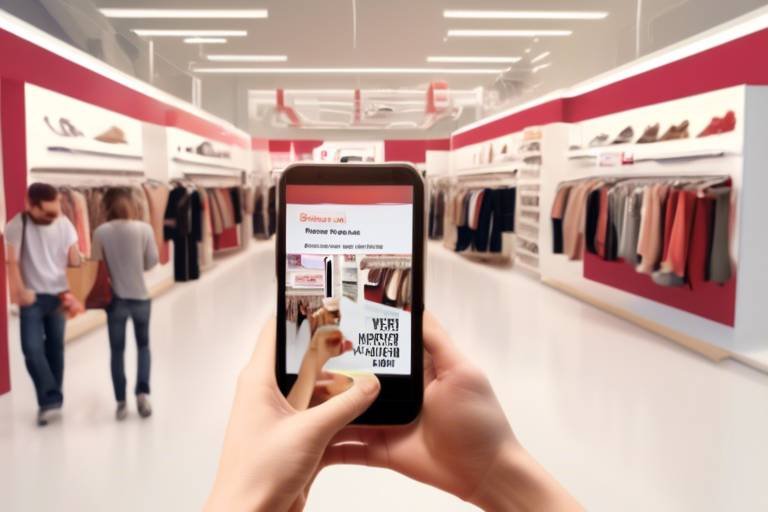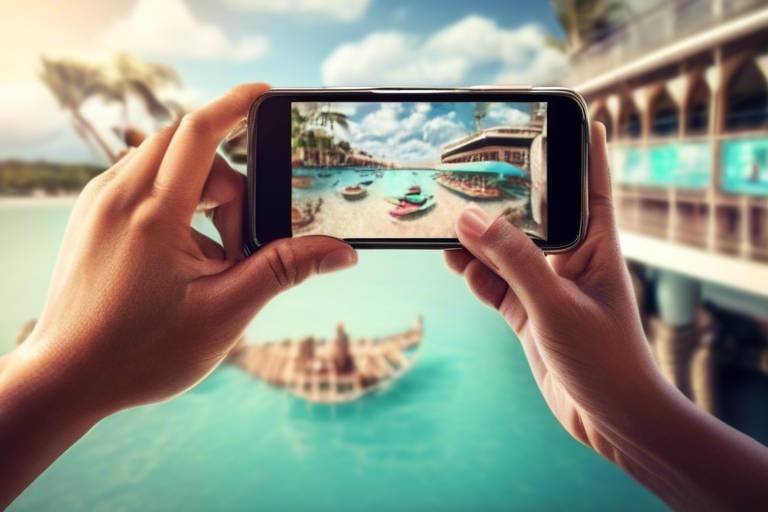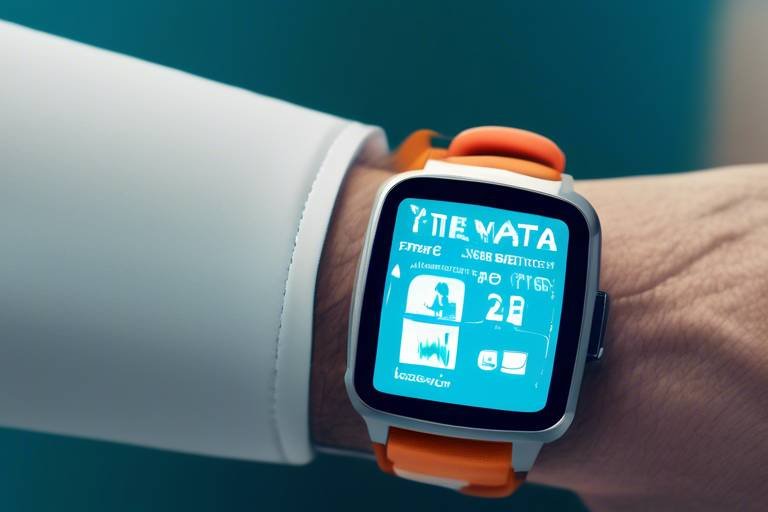The Impact of Augmented Reality on Retail Shopping
Augmented reality (AR) is not just a buzzword; it’s a revolutionary force reshaping the retail landscape. Imagine stepping into a store where the products come to life right before your eyes. With AR, this is no longer a fantasy but a tangible reality. As consumers increasingly seek out engaging shopping experiences, retailers are turning to AR technology to enhance customer interactions, streamline operations, and ultimately drive sales. This article delves into the various ways AR is transforming how we shop, making it more interactive, personalized, and enjoyable.
At its core, augmented reality blends digital content with the real world, creating immersive experiences that enhance how users perceive and interact with products. Unlike virtual reality, which transports users to an entirely different environment, AR overlays digital elements onto the real world. This technology has found a natural home in retail, where it can bridge the gap between online and offline shopping experiences. By integrating AR into retail environments, businesses are not just selling products; they are crafting experiences that resonate with customers on a deeper level.
One of the most significant advantages of AR in retail is its ability to significantly improve customer experiences. Imagine being able to visualize a piece of furniture in your living room before making a purchase. AR technologies enable shoppers to see how products fit into their own spaces, leading to increased satisfaction and informed purchasing decisions. This level of engagement is crucial in today’s competitive market, where consumers are bombarded with choices. By providing interactive experiences, retailers can capture attention and foster a sense of connection with their products.
Virtual try-on solutions are a game-changer in the retail sector, allowing customers to see how clothing, accessories, or makeup would look on them without the need for physical trials. This technology minimizes the hassle of trying on multiple items in-store, which can be time-consuming and often leads to frustration. Instead, customers can use their smartphones or AR-enabled devices to visualize how a product will look on them. This not only enhances the shopping experience but also reduces return rates, as customers are more likely to be satisfied with their purchases.
AR plays a pivotal role in reducing return rates by providing accurate visualizations of products. When customers can see how an item looks on them or in their space, they are less likely to make impulsive purchases that they later regret. This accuracy saves retailers significant time and costs associated with reverse logistics and restocking. It’s a win-win situation: customers get a better shopping experience, and retailers enjoy lower return rates.
Another benefit of AR is its ability to foster customer confidence in purchase decisions. Shoppers can better assess fit and style before committing to a buy, leading to increased satisfaction and loyalty. In a world where consumers are often overwhelmed with options, AR provides clarity and assurance, making it easier for them to make choices that align with their preferences.
AR is transforming traditional product displays into interactive experiences. Imagine walking through a store where you can point your phone at a product and instantly access information, reviews, and even videos demonstrating its use. This level of engagement captures customers' attention and encourages them to explore products in innovative ways. Retailers can leverage AR to create memorable experiences that not only showcase their products but also tell a story that resonates with their audience.
The integration of AR in retail is not just about enhancing experiences; it’s also about driving sales and revenue. Retailers that utilize AR effectively can create unique shopping experiences that encourage impulse buying and foster customer loyalty. When customers feel engaged and excited about their shopping experience, they are more likely to make purchases and return for future shopping.
Retailers who incorporate AR into their marketing strategies can create engaging campaigns that attract customers. From interactive advertisements to in-store experiences, AR can significantly increase foot traffic and online visits, ultimately driving sales. This heightened engagement leads to a deeper connection between the brand and the consumer, fostering loyalty and repeat business.
AR technology allows for personalized promotions, enabling retailers to tailor offers to individual preferences. For example, a customer who frequently buys athletic wear could receive exclusive discounts on new arrivals in that category through an AR app. This level of personalization can significantly enhance conversion rates, as customers are more likely to respond positively to offers that resonate with their interests.
Despite its many benefits, retailers face challenges in implementing AR technology. These challenges include technological limitations, costs, and the need for staff training to effectively utilize AR tools. Retailers must navigate these hurdles to harness the full potential of AR in their operations.
The initial investment in AR technology can be substantial. Retailers must weigh the potential return on investment against the upfront costs. While AR can drive sales and enhance customer experiences, the financial implications of adopting this technology can be daunting for some businesses.
Existing technological limitations, such as device compatibility and user experience, can hinder the effectiveness of AR in retail settings. Retailers must ensure that their AR solutions are accessible and user-friendly to maximize engagement and satisfaction.
As technology continues to advance, the future of augmented reality in retail looks promising. Potential developments could further enhance the shopping experience and operational efficiency. Retailers who stay ahead of the curve by adopting AR technology will likely reap the benefits in the years to come.
Combining AR with artificial intelligence could lead to even more personalized shopping experiences. Imagine a scenario where AR not only shows you how a product looks but also predicts your preferences based on past purchases and browsing behavior. This could revolutionize the way consumers shop, making it more intuitive and enjoyable.
The growth of AR in e-commerce presents exciting opportunities for online retailers. By providing immersive shopping experiences that rival physical stores, AR can bridge the gap between online and offline shopping. Customers will be able to visualize products in their own environments, enhancing their confidence in online purchases and leading to increased sales.
- What is augmented reality in retail? Augmented reality in retail blends digital elements with the real world to enhance customer experiences and interactions with products.
- How does AR improve customer experiences? AR allows customers to visualize products in their own space, leading to informed purchasing decisions and increased satisfaction.
- What are the challenges of implementing AR in retail? Retailers face challenges such as costs, technological limitations, and the need for staff training.
- What is the future of AR in retail? The future of AR looks promising with potential advancements in AI integration and expansion into e-commerce.
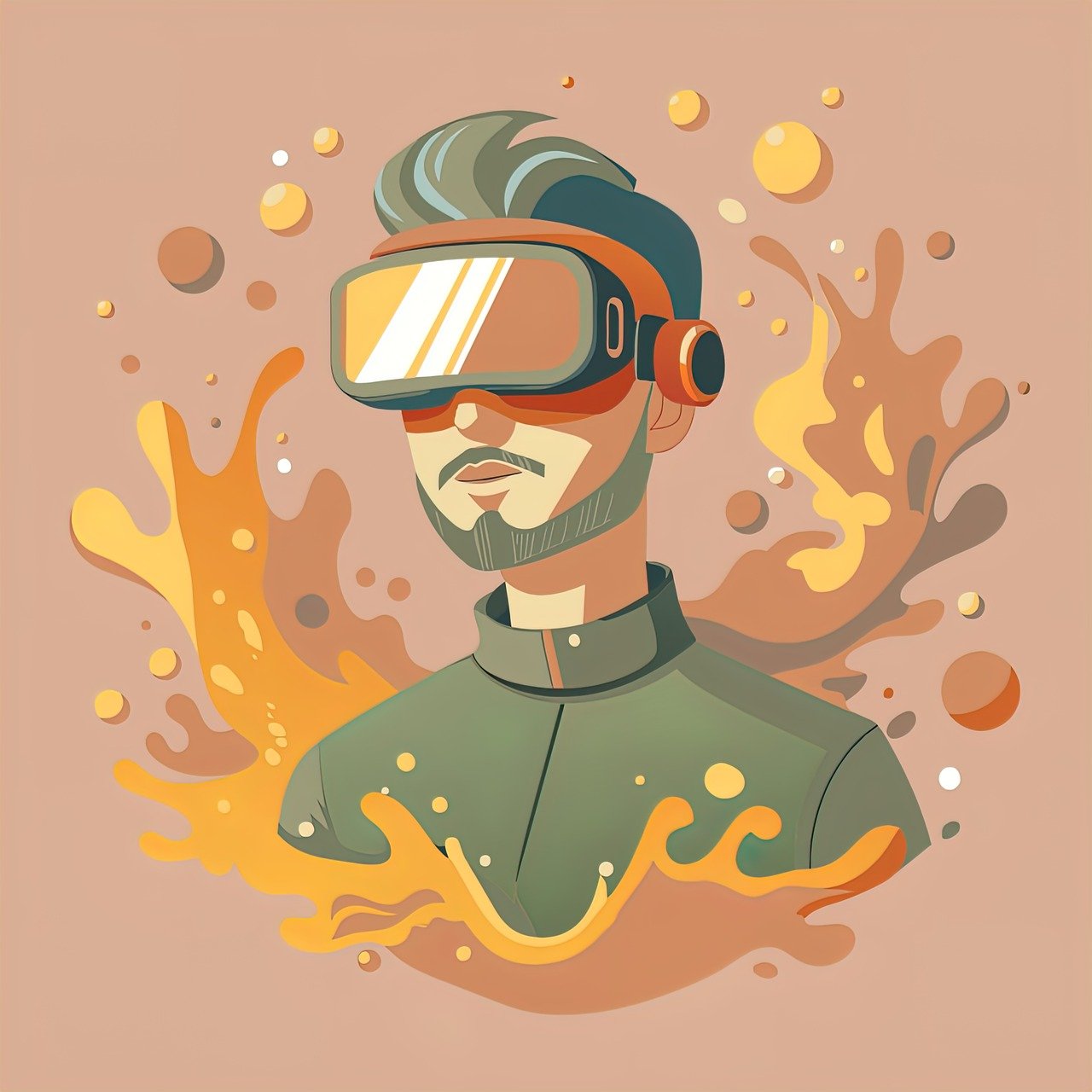
Understanding Augmented Reality
This article explores how augmented reality (AR) is transforming the retail shopping experience, enhancing customer engagement, and reshaping the future of commerce through innovative technologies and immersive experiences.
Augmented reality, or AR, is a revolutionary technology that seamlessly blends digital content with the real world. Imagine walking through your favorite store, and as you glance at a product, your smartphone or smart glasses overlay additional information, visuals, or even animations directly onto that item. This immersive experience allows users to interact with products in a way that was previously unimaginable, enhancing their perception and interaction with the retail environment.
At its core, AR enhances reality by adding a digital layer to what we see and experience. This can range from simple enhancements, like displaying product information, to more complex interactions, such as visualizing how furniture would look in your living room or trying on virtual clothes. The potential applications of AR in retail are vast and varied, making shopping not just a task, but an engaging adventure.
Here are some key aspects of AR that are transforming retail:
- Interactive Experiences: AR allows customers to engage with products in real-time, making shopping feel more like a game than a chore.
- Enhanced Visualization: Shoppers can see how products fit into their lives, which significantly aids in decision-making.
- Accessibility: With the rise of smartphones and AR apps, this technology is becoming more accessible to everyday consumers.
Furthermore, AR can be integrated into various platforms, from mobile apps to in-store kiosks, providing a versatile tool for retailers to enhance customer experiences. As AR technology continues to evolve, it is becoming increasingly sophisticated, capable of delivering highly personalized and relevant content based on user data and preferences.
In summary, understanding augmented reality is crucial for both retailers and consumers. It's not just about fancy graphics or cool tech; it's about creating a shopping experience that is more intuitive, engaging, and satisfying. As we dive deeper into how AR enhances customer experience, we will see that it is indeed reshaping the future of retail.
Here are some common questions regarding augmented reality in retail:
- What is augmented reality? AR is a technology that overlays digital content onto the real world, enhancing the user's experience.
- How does AR improve shopping? AR allows customers to visualize products in their own environment, making it easier to make informed purchasing decisions.
- Are there any downsides to AR in retail? Yes, challenges such as high initial costs and technical limitations can affect implementation.
- What is the future of AR in retail? The future looks bright, with potential integrations of AI and expansions into e-commerce.
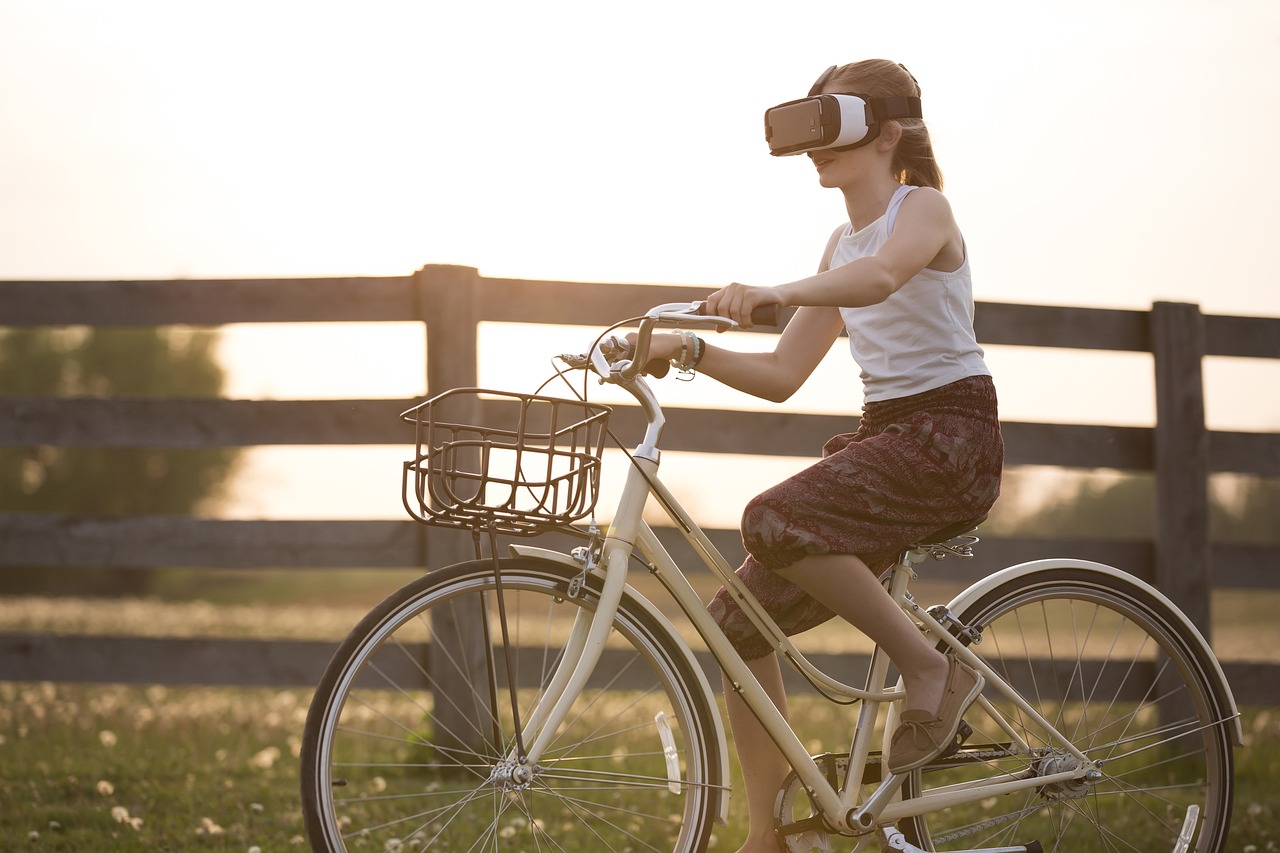
Enhancing Customer Experience
In today's fast-paced retail environment, customer experience is paramount. Augmented reality (AR) is revolutionizing how shoppers interact with products, making the shopping journey not just a transaction but an engaging experience. Imagine walking into a store and being greeted by a digital assistant that helps you navigate through aisles, or using your smartphone to visualize how a piece of furniture would look in your living room. This is not science fiction; it’s the power of AR at work, and it’s transforming the mundane into the extraordinary.
AR technologies significantly enhance the way customers perceive and interact with products. For instance, when a shopper can visualize a product in their own environment, they are more likely to feel satisfied with their purchase. This level of interaction leads to informed buying decisions, as customers can see how items fit into their lives before they make a commitment. It’s like trying on clothes or testing out gadgets without ever stepping foot in a fitting room or electronics store.
One of the standout features of AR is its ability to facilitate virtual try-ons. This innovative solution allows customers to see how clothing, accessories, or even makeup would look on them without the hassle of physical trials. Imagine trying on a pair of sunglasses just by pointing your camera at your face! This not only saves time but also significantly reduces the likelihood of returns, as customers are more confident in their choices. By visualizing products accurately, AR helps retailers save on costs associated with reverse logistics and restocking.
Moreover, AR builds customer confidence. When shoppers can assess fit, style, and functionality before making a purchase, they feel empowered. It’s akin to having a personal stylist or consultant at your fingertips, guiding you through your choices and ensuring that you make the right decision for your needs. This confidence translates into higher customer satisfaction and loyalty, which are crucial for any business looking to thrive in a competitive market.
Additionally, AR transforms traditional product displays into interactive experiences. Imagine walking past a clothing rack and seeing a digital display that shows you how to style a particular outfit or what accessories would complement it. This kind of engagement captures attention and interest, making the shopping experience memorable. Retailers can create immersive environments that not only showcase their products but also tell a story, fostering a deeper connection between the brand and the consumer.
To sum it up, the integration of augmented reality in retail is not just a trend; it's a game-changer. By enhancing customer experiences through visualization, virtual try-ons, and interactive displays, retailers are not only meeting the demands of modern consumers but exceeding them. As we move forward, it’s clear that AR will play a pivotal role in shaping the future of shopping.
- What is augmented reality in retail? Augmented reality (AR) in retail refers to the use of digital technology to enhance the shopping experience by blending virtual elements with the real world, allowing customers to visualize products in their environment.
- How does AR improve customer experience? AR improves customer experience by providing interactive and immersive ways to engage with products, helping shoppers make informed decisions and increasing satisfaction.
- Can AR reduce return rates? Yes, by allowing customers to visualize products accurately before purchase, AR can significantly reduce return rates, saving retailers both time and money.
- What are virtual try-ons? Virtual try-ons are AR solutions that enable customers to see how clothing, accessories, or makeup would look on them using their devices, eliminating the need for physical trials.
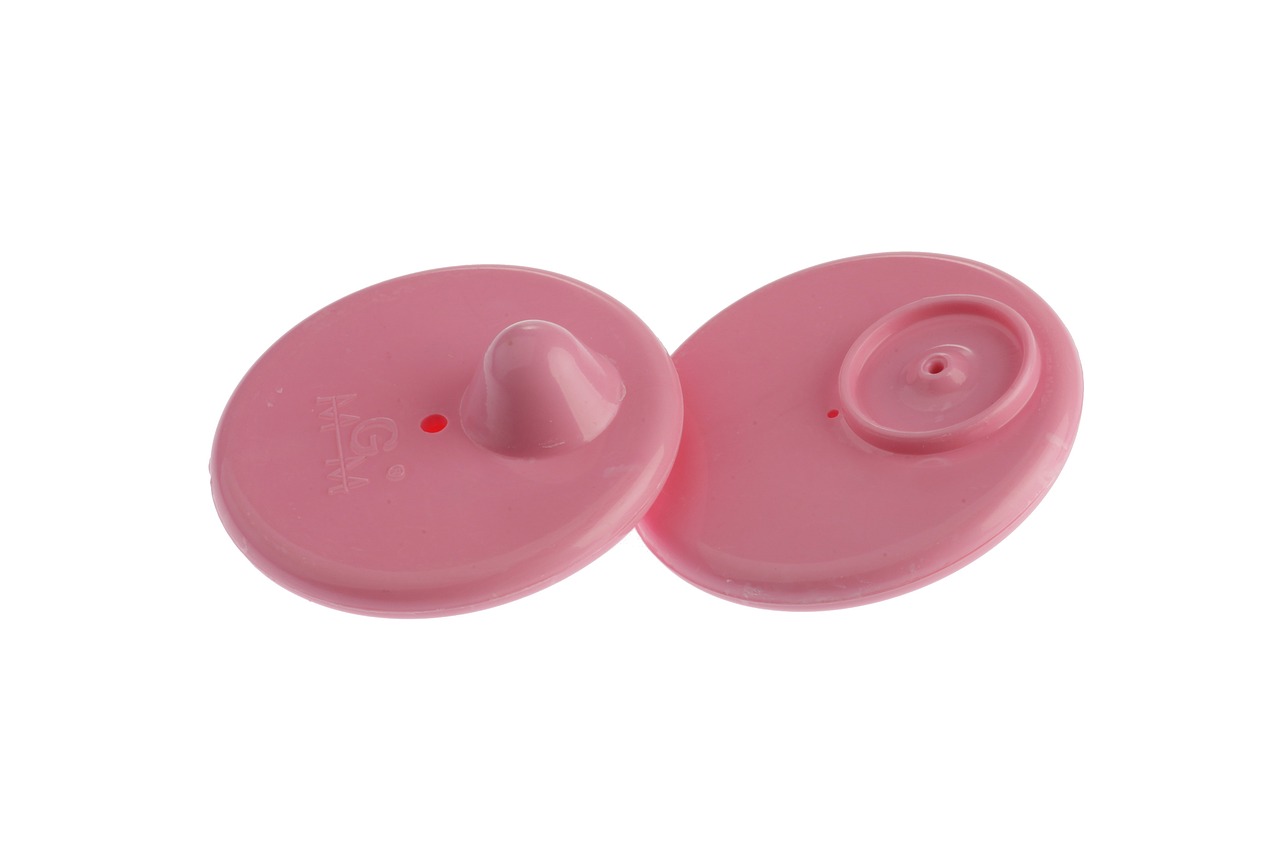
Virtual Try-Ons
Imagine walking into a store and instantly being able to try on clothes, accessories, or even makeup without stepping into a fitting room or applying a single product. have revolutionized the retail landscape, offering customers a seamless way to visualize how products will look on them. This innovative technology uses augmented reality to superimpose digital images onto the real world, allowing shoppers to see themselves in different outfits or styles with just a few taps on their smartphones or tablets.
The convenience of virtual try-ons cannot be overstated. No more waiting in long lines for a fitting room or dealing with the hassle of returning items that just don’t fit right. With AR, customers can enjoy a personalized shopping experience from the comfort of their homes or in-store. For example, a customer can simply point their device at a mirror or use their smartphone camera to see how a pair of shoes or a dress looks on them. This technology not only saves time but also enhances the overall shopping experience by making it more interactive and engaging.
Moreover, the benefits of virtual try-ons extend beyond mere convenience. They play a crucial role in reducing return rates, which is a significant issue in the retail industry. When customers can accurately visualize how a product will look on them, they are more likely to make informed purchasing decisions. This not only leads to higher customer satisfaction but also saves retailers from the logistical challenges and costs associated with processing returns.
In fact, studies have shown that retailers implementing virtual try-on solutions have witnessed a notable decrease in return rates. According to a recent survey, retailers using AR technology reported a 30% reduction in returns compared to those who did not offer such features. This statistic is a game-changer, demonstrating how virtual try-ons can enhance profitability while improving the customer experience.
Additionally, virtual try-ons build customer confidence. Shoppers often hesitate to buy items that they cannot physically try on, fearing that they might not fit or suit their style. With AR, customers can assess fit, color, and style before making a purchase, leading to a more confident buying decision. This not only fosters customer loyalty but also encourages repeat business, as satisfied customers are more likely to return for future purchases.
As we look to the future, the potential for virtual try-ons is immense. Retailers are continually innovating, seeking new ways to incorporate AR technology into their shopping experiences. For instance, some brands are experimenting with social features, allowing users to share their virtual try-on experiences with friends or seek their opinions before making a purchase. This social aspect adds another layer of engagement, making shopping a more communal and enjoyable activity.
In conclusion, virtual try-ons are not just a passing trend; they are a vital part of the evolving retail landscape. By enhancing customer experience, reducing return rates, and building confidence in purchasing decisions, AR technology is set to reshape how we shop for the better. As more retailers adopt these innovative solutions, we can expect to see an even more exciting and interactive shopping experience in the future.
- What are virtual try-ons? Virtual try-ons are augmented reality solutions that allow customers to visualize how products, such as clothing or makeup, will look on them without physically trying them on.
- How do virtual try-ons reduce return rates? By allowing customers to see how a product looks before purchasing, virtual try-ons help them make more informed decisions, leading to fewer returns.
- Can I use virtual try-ons on my smartphone? Yes, many retailers offer virtual try-on features accessible through their mobile apps or websites, making it easy to try on products from anywhere.
- Are virtual try-ons only for clothing? No, virtual try-ons can be used for a variety of products, including accessories, makeup, and even furniture, enhancing the shopping experience across different retail sectors.

Reducing Return Rates
In the dynamic world of retail, one of the most pressing challenges faced by businesses is the high rate of product returns. It's a costly issue that not only affects the bottom line but also disrupts inventory management and customer satisfaction. However, the integration of augmented reality (AR) technology is proving to be a game-changer in this regard. By allowing customers to visualize products in their own environment before making a purchase, AR significantly minimizes the uncertainty that often leads to returns.
Imagine walking into a furniture store, but instead of just looking at a couch, you can use your smartphone or AR glasses to place a virtual version of that couch right in your living room. You can see how it fits with your decor, the color against your walls, and whether it complements your style. This kind of immersive experience allows customers to make more informed decisions, drastically reducing the likelihood of them returning items simply because they didn’t match their expectations.
Moreover, AR not only enhances the visual aspect but also provides detailed information about the product. For instance, when customers use AR to try on clothing or accessories, they can see how the fabric drapes or how a watch looks on their wrist. This capability builds a sense of confidence in their purchase decisions. When shoppers feel assured about what they are buying, they're less likely to return items.
To illustrate the impact of AR on return rates, consider the following statistics:
| Retail Sector | Return Rate Without AR | Return Rate With AR |
|---|---|---|
| Fashion | 30% | 15% |
| Furniture | 20% | 10% |
| Beauty Products | 25% | 12% |
As shown in the table above, the adoption of AR can lead to a substantial reduction in return rates across various retail sectors. This not only saves retailers money but also enhances customer loyalty. When customers are satisfied with their purchases, they are more likely to return for future shopping experiences, creating a cycle of trust and repeat business.
In conclusion, by leveraging augmented reality, retailers can effectively tackle the challenge of high return rates. The technology not only enriches the shopping experience but also empowers customers to make decisions that they feel good about, ultimately leading to a win-win situation for both shoppers and retailers.
- What is augmented reality?
Augmented reality (AR) is a technology that overlays digital information onto the real world, enhancing the user's experience by blending virtual elements with their physical environment.
- How does AR reduce return rates?
AR allows customers to visualize products in their own space, helping them make more informed decisions and decreasing the chances of dissatisfaction that often leads to returns.
- Can AR be used in online shopping?
Absolutely! Many e-commerce platforms are integrating AR to provide virtual try-ons and product visualizations, creating an immersive online shopping experience.
- What are the challenges of implementing AR?
Some challenges include the high initial costs, the need for compatible devices, and the requirement for staff training to effectively use AR tools.

Building Customer Confidence
In today's fast-paced retail environment, customer confidence is paramount. With the rise of online shopping, consumers have become increasingly cautious about their purchases. Augmented Reality (AR) steps in as a game-changer, providing a bridge between the tangible and the digital. By allowing customers to visualize products in real-time, AR not only enhances the shopping experience but also instills a sense of assurance in their buying decisions.
Imagine walking into a store and being able to see how a piece of furniture would look in your living room or how a pair of shoes would fit your feet—all without having to physically try them on. This is the magic of AR. It creates a virtual environment where customers can interact with products, leading to a more informed decision-making process. When customers can see a product in their own space or on their own bodies, it significantly reduces the uncertainty that often accompanies online shopping.
According to a recent study, over 70% of consumers reported feeling more confident in their purchases after using AR tools. This increase in confidence can be attributed to several factors:
- Enhanced Visualization: Customers can see products in their actual environment, helping them to better understand scale, color, and style.
- Realistic Interactions: AR allows users to interact with products in a way that traditional online shopping cannot, making the experience more engaging.
- Reduced Anxiety: By providing a clear representation of what they are buying, AR alleviates the fear of making a wrong choice.
Furthermore, retailers that successfully implement AR technology often see a decrease in product return rates. When customers can accurately visualize a product before purchasing, they are less likely to experience buyer's remorse. This not only saves retailers time and money in handling returns but also fosters long-term customer loyalty. In a world where options are plentiful, providing a seamless and confident shopping experience can set a brand apart from the competition.
In summary, building customer confidence through AR is not just about enhancing the shopping experience; it's about creating a relationship of trust between the retailer and the consumer. As more retailers adopt AR technologies, we can expect to see a significant shift in how customers approach their purchasing decisions, leading to a more engaged and satisfied consumer base.
- What is Augmented Reality? Augmented Reality (AR) is a technology that overlays digital information onto the real world, enhancing the user's perception and interaction with their environment.
- How does AR improve customer confidence? AR allows customers to visualize products in their own space or on themselves, reducing uncertainty and helping them make informed purchasing decisions.
- Are there any downsides to using AR in retail? While AR offers many benefits, challenges include the initial investment in technology and the need for staff training to effectively utilize AR tools.
- Will AR replace traditional shopping? While AR enhances the shopping experience, it is more likely to complement traditional shopping rather than replace it, providing customers with a unique blend of online and in-store experiences.
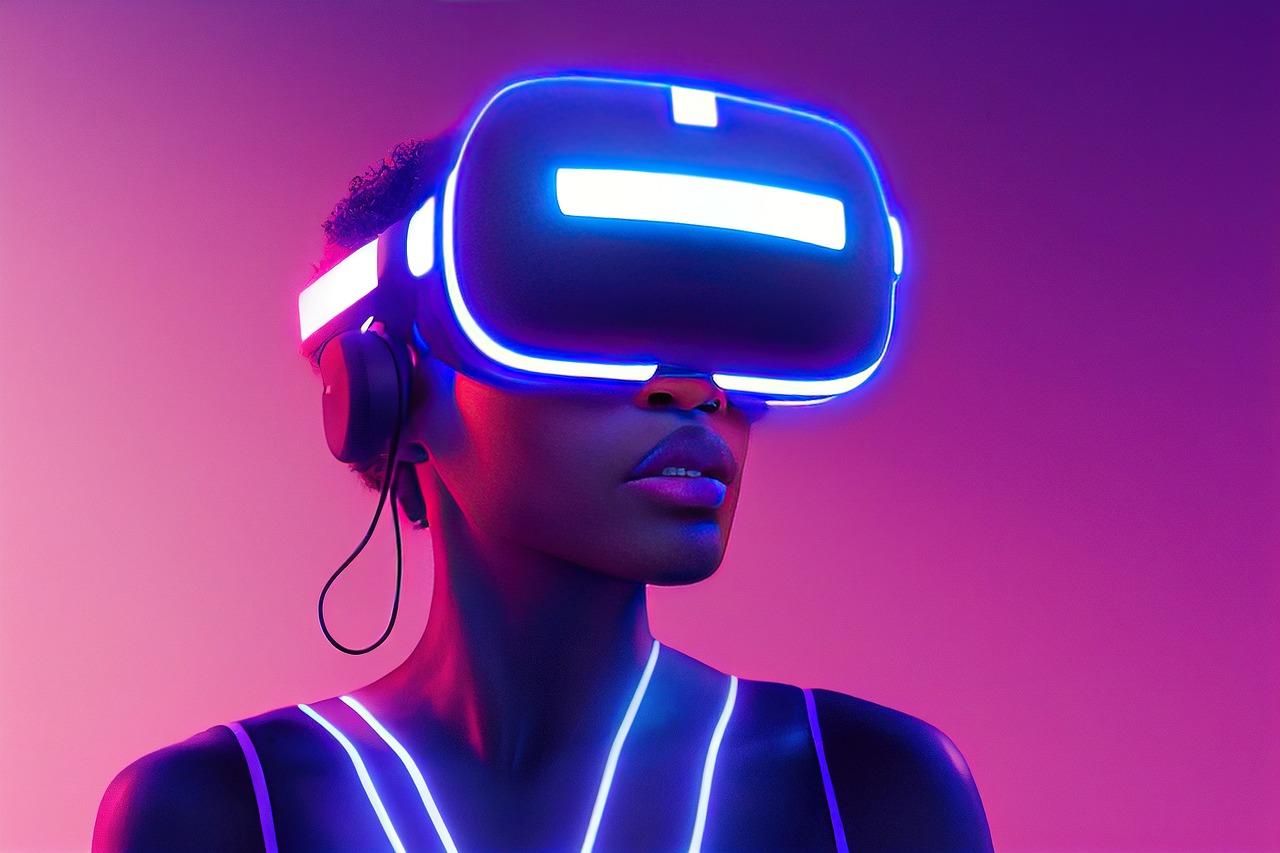
Interactive Product Displays
In the ever-evolving landscape of retail, are revolutionizing the way consumers engage with products. Gone are the days of static displays that merely showcase items; today, retailers are leveraging augmented reality (AR) to create dynamic environments that captivate shoppers. Imagine walking into a store and being greeted by a digital interface that allows you to explore products in a 3D space. This immersive experience not only grabs attention but also enhances understanding of the product’s features and benefits.
One of the most exciting aspects of interactive displays is their ability to provide real-time information about products. For instance, when a shopper points their smartphone at a product, they might see a video demonstrating its use, read customer reviews, or even access special promotions. This level of interactivity can transform a mundane shopping trip into an engaging adventure, making customers feel more informed and empowered in their purchasing decisions.
Furthermore, these displays can be customized based on customer preferences and behaviors. Retailers can utilize data analytics to tailor the AR experience, ensuring that the most relevant products are highlighted for each individual. This personalization not only enhances customer satisfaction but also fosters a deeper connection between the consumer and the brand. As customers interact with these displays, they are more likely to remember the brand and return for future purchases.
To illustrate the impact of interactive displays, consider the following table that outlines key benefits:
| Benefit | Description |
|---|---|
| Enhanced Engagement | Interactive displays capture customers' attention, encouraging them to spend more time in-store. |
| Increased Product Understanding | Shoppers can see products in action, leading to better-informed purchasing decisions. |
| Personalization | Displays can adapt to individual preferences, making the shopping experience unique. |
| Boosted Sales | Engaging experiences often lead to higher conversion rates and increased sales. |
In conclusion, the integration of interactive product displays powered by AR not only enriches the shopping experience but also sets a new standard for customer engagement in retail. As consumers increasingly seek out unique and personalized experiences, retailers who embrace this technology will likely see a significant advantage in a competitive marketplace.
- What is augmented reality in retail? Augmented reality (AR) in retail refers to the use of technology to overlay digital information onto the real world, enhancing the shopping experience through interactive displays and virtual try-ons.
- How do interactive product displays work? Interactive product displays use AR technology to allow customers to engage with products digitally, providing information, demonstrations, and personalized experiences through their devices.
- Can interactive displays help reduce return rates? Yes, by allowing customers to visualize and interact with products before purchasing, interactive displays can lead to more informed decisions, thereby reducing the likelihood of returns.
- What are the future trends for AR in retail? Future trends may include deeper integration with artificial intelligence for personalized shopping experiences and expansion into e-commerce platforms, providing immersive online shopping options.
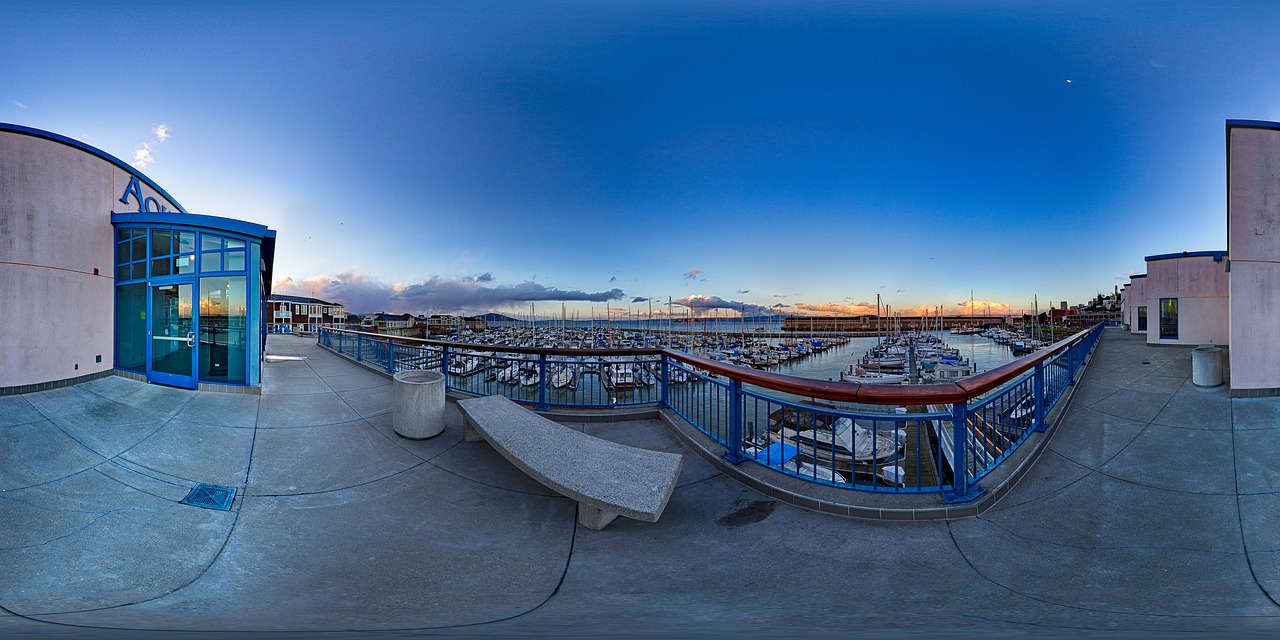
Driving Sales and Revenue
The integration of augmented reality (AR) in retail is not just a trend; it's a transformative force that is reshaping how businesses engage with their customers and ultimately driving sales and revenue. Imagine walking into a store and seeing a digital overlay that highlights special promotions or provides additional product information right in front of you. This is the kind of immersive experience that AR can create, capturing the attention of shoppers in ways traditional marketing simply cannot.
One of the most significant impacts of AR is its ability to create unique shopping experiences that encourage impulse buying. When customers are engaged and entertained, they are more likely to make unplanned purchases. For instance, a clothing retailer might allow customers to see how a particular outfit looks on them through a virtual fitting room. This not only enhances the shopping experience but also increases the likelihood of a sale. In fact, studies have shown that retailers who incorporate AR technology into their shopping environments can see conversion rates rise dramatically.
Furthermore, AR facilitates targeted promotions tailored to individual preferences. By using data analytics and customer behavior insights, retailers can design personalized offers that resonate with shoppers. For example, if a customer frequently purchases athletic wear, AR can present them with exclusive discounts on new arrivals in that category. This level of personalization not only boosts conversion rates but also fosters customer loyalty, as shoppers feel valued and understood.
To illustrate the impact of AR on sales and revenue, consider the following table that summarizes key benefits:
| Benefit | Description |
|---|---|
| Increased Engagement | AR captures customer interest, leading to longer in-store visits and increased likelihood of purchases. |
| Impulse Buying | Interactive experiences can trigger spontaneous purchases, boosting overall sales. |
| Personalized Promotions | Targeted offers based on customer behavior enhance conversion rates and customer satisfaction. |
Moreover, the implementation of AR can create a sense of exclusivity and urgency. Retailers can use AR to launch limited-time offers or exclusive products that can only be accessed through the AR experience. This not only drives immediate sales but also encourages customers to visit the store or website more frequently to catch the latest deals. The thrill of discovering something new or unique can turn a casual shopper into a loyal customer.
In conclusion, the integration of augmented reality in retail is a game-changer for driving sales and revenue. By creating engaging, personalized, and interactive shopping experiences, retailers can not only increase their bottom line but also build lasting relationships with their customers. As AR technology continues to evolve, the potential for even greater sales growth is on the horizon, making it an essential tool for any forward-thinking retailer.
- What is augmented reality in retail?
Augmented reality in retail refers to the use of digital technology to enhance the shopping experience by overlaying digital information onto the physical world. - How does AR improve customer engagement?
AR improves customer engagement by providing interactive experiences that captivate shoppers and encourage them to explore products in new ways. - Can AR help reduce return rates?
Yes, by allowing customers to visualize products accurately, AR can help them make more informed purchasing decisions, leading to fewer returns.
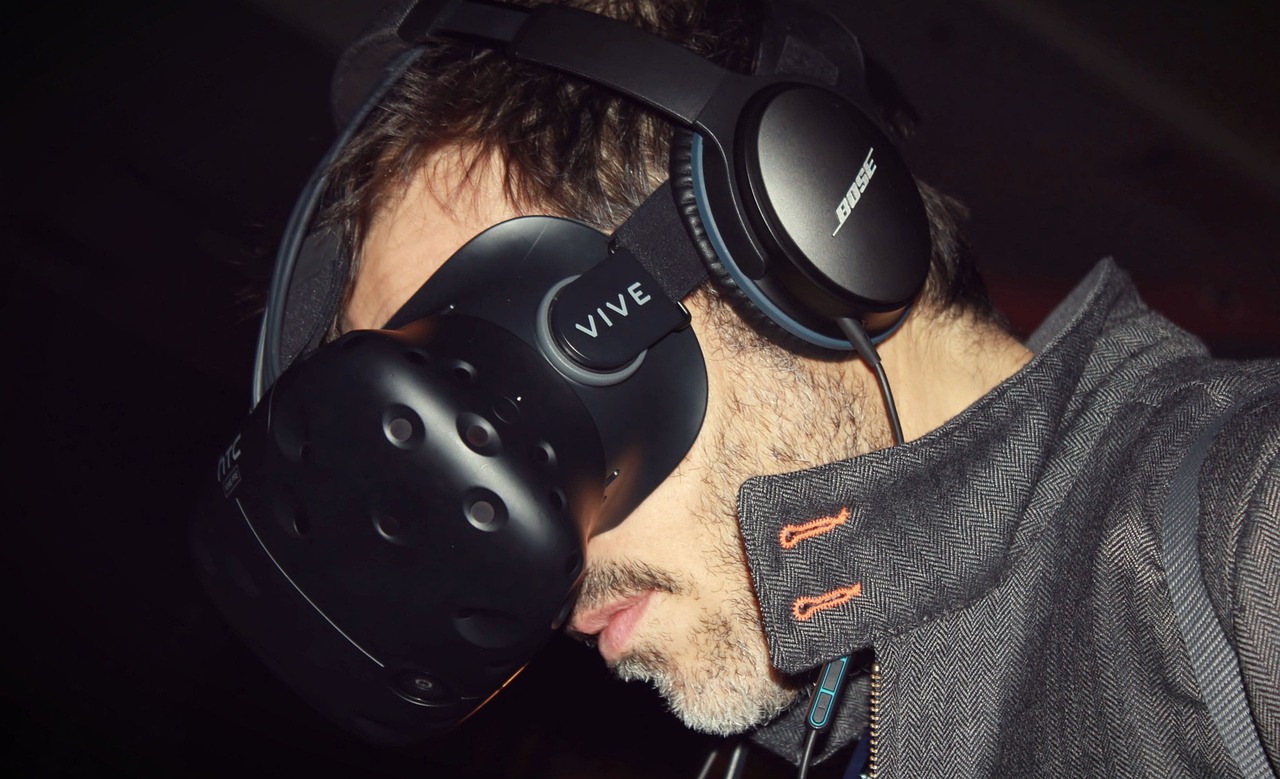
Increased Engagement
In today's fast-paced retail landscape, capturing the attention of consumers is more important than ever. Augmented reality (AR) has emerged as a game-changer in this arena, creating a buzz that traditional marketing methods struggle to achieve. Imagine walking into a store and seeing a giant, interactive display that not only showcases the latest products but also invites you to engage with them in a way that feels almost magical. This is the power of AR in retail, where engagement isn’t just an added bonus; it’s the core of the shopping experience.
When retailers implement AR technologies, they open up a world of interactive possibilities that can transform a mundane shopping trip into an exciting adventure. For example, customers can scan products with their smartphones to unlock exclusive content, such as videos, tutorials, or even special discounts. This kind of interaction not only grabs attention but also encourages customers to spend more time in-store or on a website, ultimately leading to increased sales.
Furthermore, AR creates a sense of community and shared experience among shoppers. Consider the following elements that contribute to heightened engagement:
- Interactive Experiences: Retailers can create immersive experiences that allow customers to visualize products in their own environment, making the shopping process more personal and relatable.
- Social Sharing: Engaging AR experiences can easily be shared on social media, encouraging customers to showcase their finds and experiences, which helps in organic marketing.
- Gamification: Incorporating game-like elements into the shopping experience, such as scavenger hunts or rewards for using AR features, keeps customers engaged and coming back for more.
Moreover, the data collected from AR interactions can provide retailers with valuable insights into customer preferences and behaviors. By analyzing how customers engage with AR features, retailers can tailor their offerings to better meet consumer needs, leading to a more personalized shopping experience. This not only enhances customer satisfaction but also fosters brand loyalty.
In conclusion, the integration of AR in retail is not just about keeping up with technological trends; it’s about creating a compelling shopping experience that resonates with today’s consumers. As we continue to see advancements in AR technology, the potential for increased engagement in retail will only grow, redefining how we shop and interact with brands.
Q1: How does augmented reality improve customer engagement in retail?
A1: Augmented reality enhances customer engagement by creating interactive and immersive experiences that allow shoppers to visualize products in their environment, leading to increased interest and longer shopping durations.
Q2: What are some examples of AR applications in retail?
A2: Examples include virtual try-on solutions for clothing and accessories, interactive product displays, and AR-enabled mobile apps that provide exclusive content or promotions when scanning products.
Q3: Can AR help in reducing return rates?
A3: Yes, by allowing customers to visualize products accurately before purchase, AR can help in reducing the likelihood of returns, as shoppers can assess fit and style more effectively.
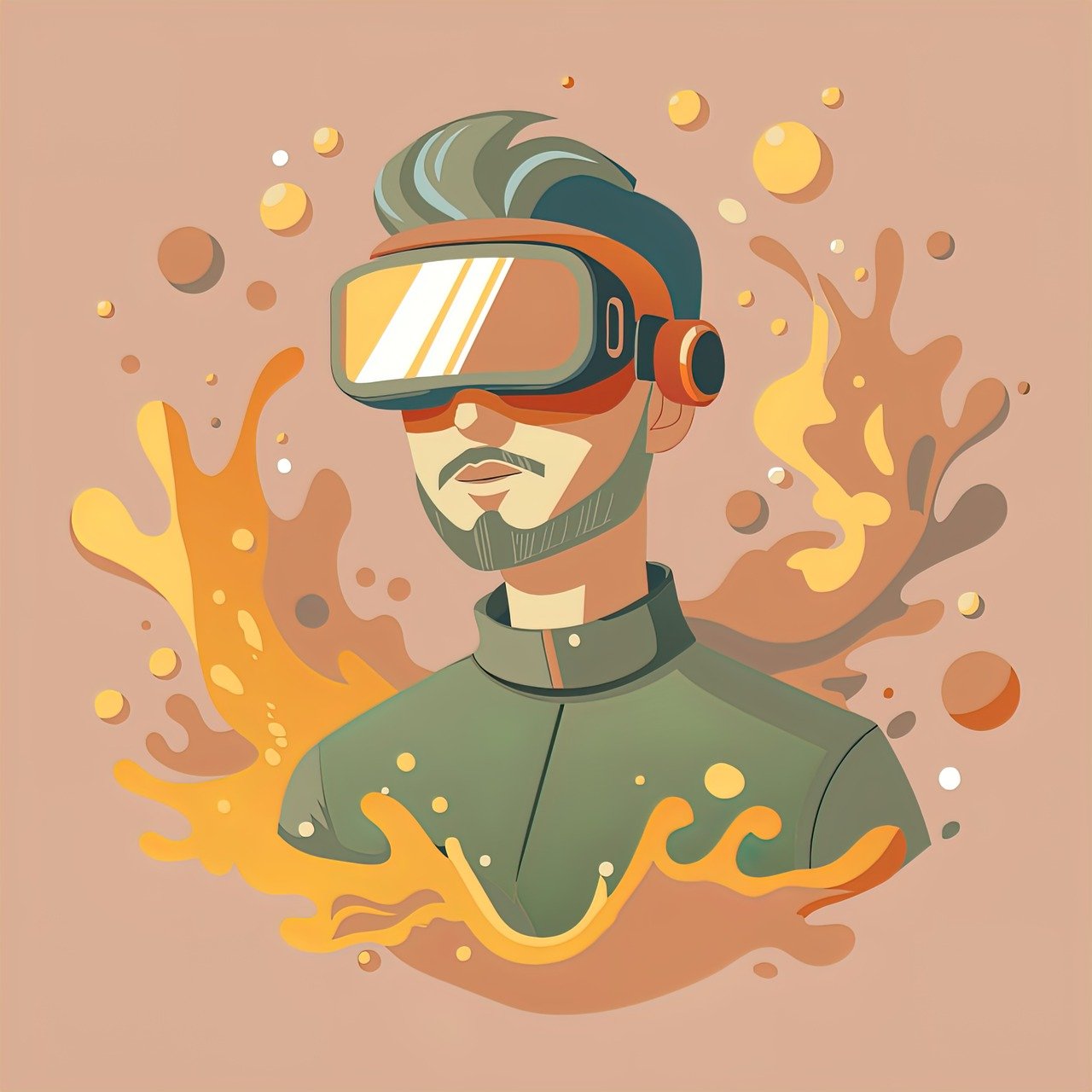
Targeted Promotions
In the ever-evolving landscape of retail, have emerged as a game-changer, thanks to the integration of augmented reality (AR). Imagine walking into your favorite store, and as you browse through the aisles, your smartphone or AR glasses come to life, presenting you with personalized offers based on your shopping history and preferences. This level of personalization not only enhances the shopping experience but also significantly boosts conversion rates.
AR technology enables retailers to gather data on customer behavior, allowing them to create tailored promotions that resonate with individual shoppers. For instance, if a customer frequently buys athletic wear, they might receive exclusive discounts on the latest sports gear when they enter the store. This targeted approach not only makes customers feel valued but also encourages them to make purchases they might not have considered otherwise.
Moreover, the ability to integrate AR with customer profiles means that promotions can be dynamically adjusted based on real-time interactions. For example, if a customer spends extra time looking at a specific product, the AR system could trigger a special offer or bundle deal for that item, enticing them to buy. This level of engagement creates a sense of urgency and excitement, which can lead to impulse buying.
To illustrate the effectiveness of targeted promotions, consider the following table showcasing the impact of AR-driven promotions on sales:
| Promotion Type | Increase in Sales | Customer Engagement |
|---|---|---|
| Personalized Discounts | 25% | 40% |
| Exclusive Bundles | 30% | 50% |
| Flash Sales via AR | 35% | 60% |
As seen in the table, personalized discounts and exclusive bundles can lead to significant increases in both sales and customer engagement. This data highlights the potential of AR not just as a novelty but as a powerful tool for driving retail success.
In conclusion, targeted promotions powered by augmented reality are not just a trend; they represent a shift in how retailers interact with customers. By leveraging data and technology, retailers can create a shopping experience that is not only enjoyable but also highly effective in converting casual browsers into loyal buyers. As AR continues to evolve, we can expect even more innovative ways to engage customers and enhance their shopping journeys.
- What is augmented reality in retail?
Augmented reality in retail refers to the use of technology to overlay digital information onto the physical shopping experience, enhancing customer interaction with products.
- How do targeted promotions work?
Targeted promotions use customer data and AR technology to create personalized offers, increasing the likelihood of purchase by tailoring promotions to individual preferences.
- Can AR reduce return rates?
Yes, by allowing customers to visualize products accurately before purchase, AR can help reduce the likelihood of returns, saving retailers time and money.
- What are the challenges of implementing AR in retail?
Challenges include high initial costs, technological limitations, and the need for staff training to effectively utilize AR tools.
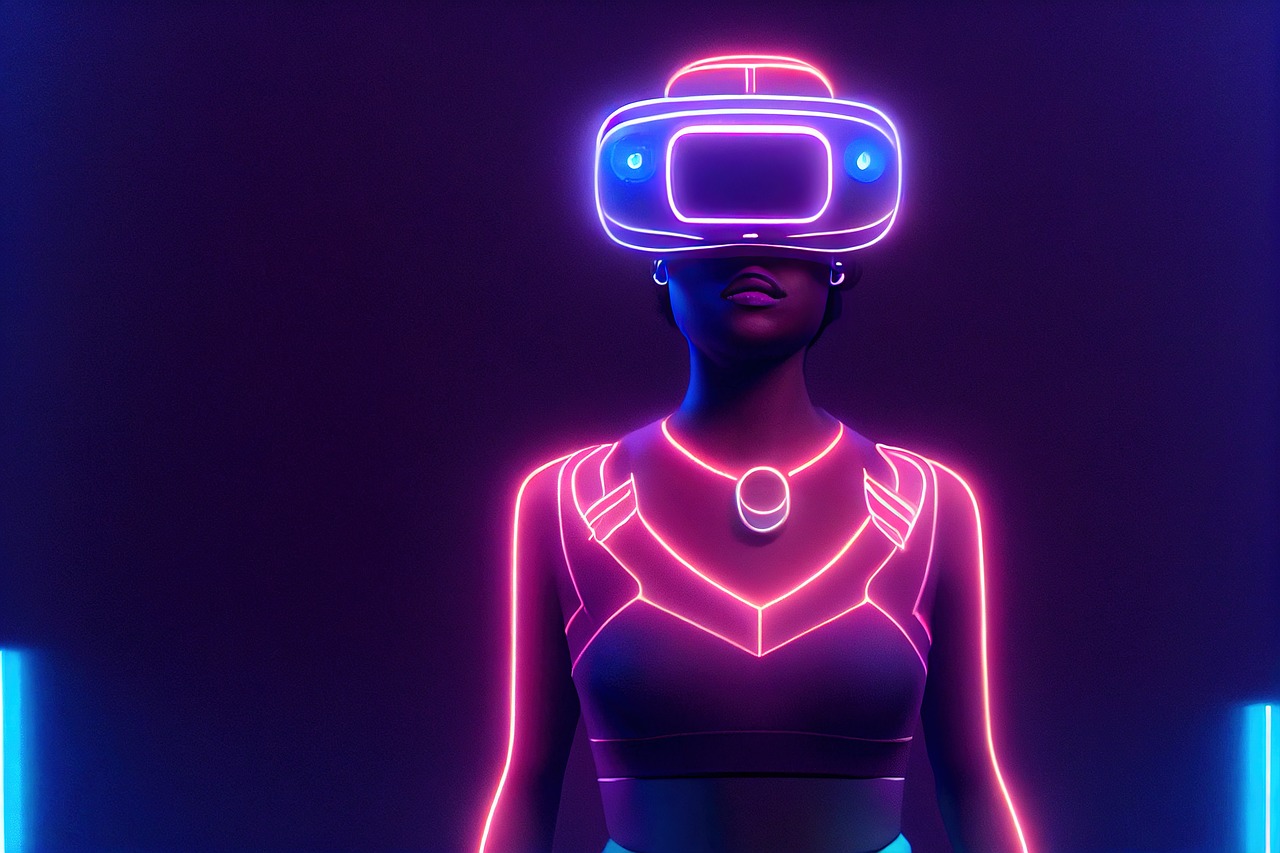
Challenges of Implementing AR
While the potential of Augmented Reality (AR) in retail is undeniably exciting, the journey to implementation is fraught with challenges. Retailers must navigate a complex landscape filled with technological, financial, and operational hurdles. One of the primary concerns is the cost of implementation. The initial investment in AR technology can be substantial, encompassing not only the hardware and software but also the necessary infrastructure upgrades. Retailers must carefully weigh these costs against the potential return on investment. After all, it's a bit like deciding whether to buy a shiny new sports car; it looks great, but can you afford the insurance and maintenance?
Another significant challenge lies in the technical limitations of AR technology. Not all devices are equipped to handle advanced AR applications, which can lead to inconsistent user experiences. Imagine walking into a store, excited to try out the latest AR feature, only to find that your smartphone can't support it. This can result in frustration for customers and may deter them from returning. Additionally, the effectiveness of AR can be compromised if the technology does not seamlessly integrate with existing systems, leading to a disjointed shopping experience.
Moreover, there's the issue of staff training. Implementing AR tools requires employees to be well-versed in how to use them effectively. This means investing time and resources in training programs, which can be a daunting task for retailers already stretched thin. It's akin to teaching an old dog new tricks; while it’s possible, it takes patience and effort. Without proper training, employees may struggle to assist customers, undermining the very benefits that AR is meant to provide.
To summarize, the challenges of implementing AR in retail can be categorized as follows:
- Cost Considerations: High initial investment and ongoing maintenance costs.
- Technical Limitations: Compatibility issues with devices and existing systems.
- Staff Training: Need for comprehensive training programs for employees.
Despite these challenges, the rewards of successfully integrating AR into retail can be transformative, leading to enhanced customer engagement and increased sales. The key is for retailers to approach these challenges with a strategic mindset, ensuring they have the resources and plans in place to overcome them.
- What is augmented reality? Augmented reality is a technology that overlays digital information onto the real world, enhancing the user's perception of their environment.
- How does AR enhance the shopping experience? AR allows customers to visualize products in their own space, try on items virtually, and engage with interactive displays, leading to more informed purchasing decisions.
- What are the main challenges of implementing AR in retail? The main challenges include high costs, technical limitations, and the need for staff training to effectively use AR tools.
- Is AR worth the investment for retailers? While the initial costs can be high, the potential for increased sales, improved customer engagement, and reduced return rates can make AR a worthwhile investment for many retailers.
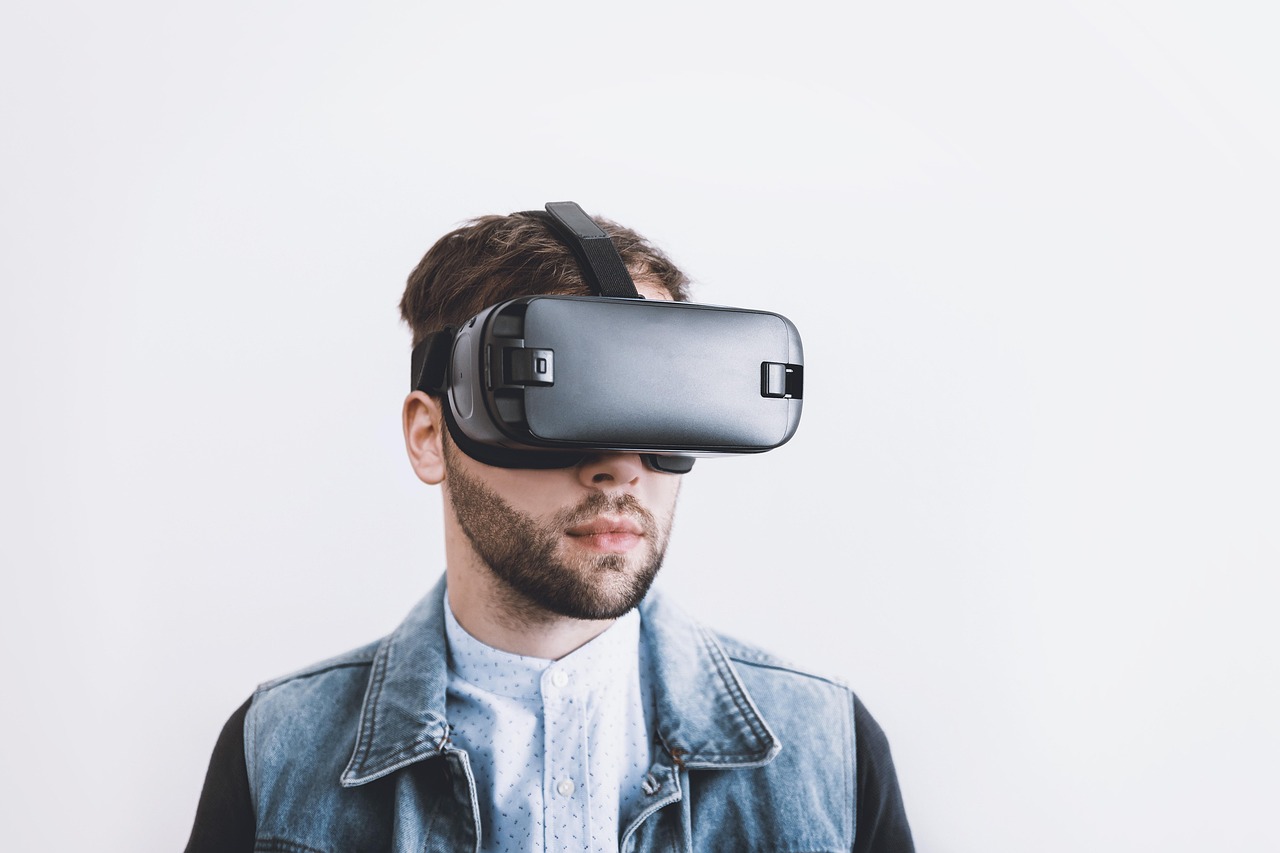
Cost Considerations
When it comes to implementing augmented reality (AR) in retail, one of the most pressing issues is the involved. Retailers must navigate a complex landscape of initial investments, ongoing maintenance, and potential returns. The initial outlay for AR technology can be substantial, with expenses including hardware, software, and development costs. For many businesses, especially small to medium-sized enterprises, these costs can seem daunting.
To better understand the financial implications, let's break down some of the key factors that retailers should consider:
| Cost Factor | Description |
|---|---|
| Hardware | Devices such as AR glasses, tablets, or smartphones that support AR applications. |
| Software Development | Custom software solutions may be needed to create unique AR experiences tailored to the brand. |
| Maintenance | Ongoing costs associated with updating software and hardware as technology evolves. |
| Training | Staff training is crucial to ensure that employees can effectively use AR tools. |
While the costs can be significant, retailers must also consider the potential return on investment (ROI). By enhancing the shopping experience, AR can lead to increased customer engagement, higher sales, and reduced return rates. It’s essential to weigh these potential benefits against the initial investment. For instance, businesses that have successfully integrated AR report a noticeable uptick in customer satisfaction and loyalty, which can translate into long-term profitability.
Moreover, it’s worth noting that as AR technology advances, the costs associated with it are likely to decrease. This trend could make AR more accessible to retailers of all sizes. Investing in AR today could position businesses to capitalize on future opportunities as the technology becomes more mainstream.
In conclusion, while the cost considerations of implementing AR in retail can be challenging, the strategic benefits and potential for increased revenue make it an avenue worth exploring. Retailers should conduct thorough market research and financial analysis to ensure they make informed decisions that align with their long-term business goals.
- What is augmented reality? Augmented reality is a technology that overlays digital information onto the real world, enhancing the user's experience and interaction with their surroundings.
- How can AR reduce return rates? By allowing customers to visualize products in their own space or try on items virtually, AR helps them make more informed purchasing decisions, leading to fewer returns.
- What are the main costs associated with implementing AR? Key costs include hardware, software development, maintenance, and staff training.
- Is AR only beneficial for large retailers? No, while larger retailers may have more resources to invest, small and medium-sized businesses can also benefit from AR as technology becomes more affordable.
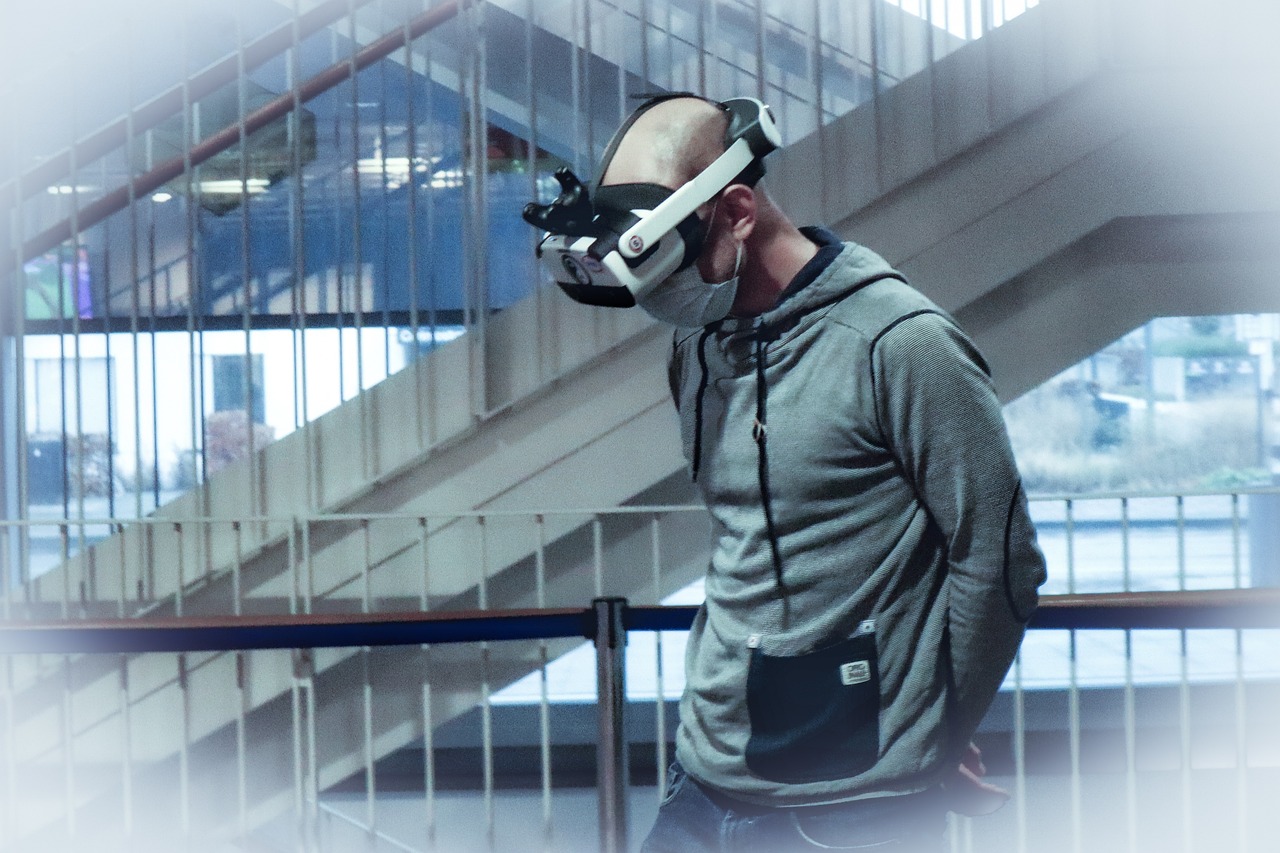
Technical Limitations
When it comes to implementing augmented reality (AR) in retail, there are some that retailers must navigate. First off, not all devices are equipped to handle advanced AR features. For instance, older smartphones and tablets may lack the necessary processing power or camera quality to deliver a seamless AR experience. Imagine trying to watch a high-definition movie on a vintage television set—it just doesn't work! Similarly, if a customer's device can't support AR, they will miss out on the immersive shopping experience.
Moreover, user experience plays a crucial role in the success of AR applications. If the AR interface is clunky or difficult to navigate, users may become frustrated and abandon the experience altogether. Think of it like trying to use a complicated remote control; if it’s not user-friendly, you’ll likely toss it aside. Retailers need to ensure that their AR solutions are intuitive and engaging, or they risk losing potential customers.
Another significant hurdle is the requirement for high-speed internet. AR applications often rely on real-time data and cloud computing to function effectively. In areas with poor connectivity, users may experience lag or interruptions, which can diminish the overall experience. This is particularly problematic in retail environments where quick decisions are crucial. If a customer is waiting for an AR feature to load, they might lose interest and walk away.
Lastly, there’s the challenge of staff training. Retailers must invest time and resources to ensure that their employees are well-versed in using AR tools. Without proper training, staff may struggle to assist customers or demonstrate AR features effectively. This can lead to a disconnect between the technology and the customer experience. It's like having a fancy gadget that nobody knows how to operate; it becomes more of a hindrance than a help.
In summary, while AR holds tremendous potential for enhancing the retail experience, these technical limitations must be addressed for successful implementation. Retailers need to consider device compatibility, user experience, internet speed, and staff training to fully leverage the power of augmented reality.
- What devices are compatible with AR technology? Most modern smartphones and tablets support AR, but older models may not have the necessary specifications.
- How can retailers improve user experience with AR? By ensuring that AR applications are intuitive, engaging, and easy to navigate, retailers can enhance customer satisfaction.
- Is high-speed internet necessary for AR? Yes, a reliable and fast internet connection is crucial for a seamless AR experience.
- What kind of training do staff need for AR tools? Staff should be trained on how to use AR applications effectively and assist customers in navigating these tools.

The Future of AR in Retail
The future of augmented reality (AR) in retail is not just bright; it's positively dazzling! As technology continues to leap forward at an astonishing pace, we can expect AR to redefine how we shop, interact with brands, and experience products. Imagine walking into a store and instantly being greeted by a virtual assistant that knows your preferences, or browsing online and being able to visualize how a piece of furniture would look in your living room—all thanks to AR.
One of the most exciting prospects is the integration of AR with artificial intelligence (AI). This combination could lead to hyper-personalized shopping experiences. Picture this: as you browse through an online store, AI analyzes your previous purchases and browsing habits to recommend products tailored specifically for you. With AR, you could then visualize these recommendations in your own space before making a purchase. It’s like having your personal shopper who knows exactly what you want, even before you do!
Furthermore, the expansion of AR into e-commerce presents thrilling opportunities. Online retailers are starting to realize that simply having a website isn't enough anymore. They need to provide immersive experiences that can rival the excitement of physical shopping. AR can bridge this gap, allowing consumers to interact with products in a three-dimensional space. For instance, instead of just seeing a flat image of a dress, shoppers could see how it moves and fits on a virtual model that resembles their body type. This level of engagement could revolutionize online shopping, making it more interactive and enjoyable.
However, as we look forward, it’s essential to acknowledge that the journey of integrating AR into retail isn't without its bumps. Retailers will need to invest in the necessary infrastructure and training to fully leverage these technologies. But the potential rewards are immense. According to a recent study, businesses that adopt AR technology are projected to see a significant increase in customer retention and sales. With the right strategies in place, AR could become a game-changer in the retail landscape.
To summarize, the future of AR in retail is poised for remarkable growth and innovation. With advancements in AI and an increasing shift towards e-commerce, we can expect shopping to become more personalized, interactive, and enjoyable. The retailers who embrace these changes will not only enhance customer satisfaction but also secure their place in the competitive market of the future.
- What is augmented reality in retail?
Augmented reality in retail refers to the use of digital technology to overlay information or images onto the physical shopping environment, enhancing the customer experience.
- How does AR improve the shopping experience?
AR allows customers to visualize products in their own space, try on items virtually, and engage with interactive displays, leading to more informed purchasing decisions.
- What are some challenges retailers face when implementing AR?
Challenges include high initial costs, technological limitations, and the need for staff training to effectively utilize AR tools.
- What does the future hold for AR in retail?
The future looks promising with potential advancements in AI integration and expansion into e-commerce, creating even more immersive shopping experiences.

Integration with AI
As we look toward the future of retail, the integration of augmented reality (AR) with artificial intelligence (AI) stands out as a game-changer. Imagine walking into a store, and as soon as you step in, your smartphone or AR glasses recognize your preferences based on previous purchases and browsing history. This fusion of technologies creates a highly personalized shopping experience that can revolutionize how we interact with products.
By leveraging AI algorithms, retailers can analyze vast amounts of data to predict customer behavior and preferences. For instance, if a shopper frequently buys athletic wear, the AR system could highlight new arrivals in that category as soon as they enter the store, or even suggest complementary items. This kind of tailored experience not only makes shopping more enjoyable but also significantly increases the chances of conversion.
Furthermore, AI can enhance the AR experience by providing real-time feedback and recommendations. When a customer tries on a virtual outfit, AI can analyze the customer's body type and suggest styles that would look best on them. This level of personalization fosters a deeper connection between the customer and the brand, making them feel valued and understood.
To illustrate, consider the following potential benefits of integrating AI with AR in retail:
- Enhanced Personalization: AI can customize the shopping experience based on individual preferences, making each visit unique.
- Improved Inventory Management: AI can predict which products will be popular, helping retailers manage stock more efficiently.
- Increased Customer Engagement: Personalized experiences lead to higher engagement rates, as customers are more likely to interact with tailored content.
As exciting as this sounds, the integration of AI and AR does come with its challenges. Retailers need to ensure they have the right infrastructure in place, including data security measures to protect customer information. Moreover, the technology must be user-friendly, as a complicated interface could deter customers from using AR features.
In conclusion, the integration of AI with AR in retail is not just a trend—it's a glimpse into the future of shopping. By creating more personalized, engaging, and efficient shopping experiences, retailers can not only boost sales but also foster long-term customer loyalty. As technology continues to evolve, we can expect even more innovative solutions that will redefine the retail landscape.
Here are some common questions about the integration of AR and AI in retail:
- What is augmented reality? Augmented reality is a technology that overlays digital content onto the real world, enhancing the way users interact with their environment.
- How does AI improve the AR shopping experience? AI analyzes customer data to provide personalized recommendations and enhance the overall shopping experience.
- Are there any challenges with integrating AR and AI? Yes, challenges include technological limitations, costs, and the need for effective staff training.
- What are the benefits of using AR in retail? Benefits include reduced return rates, increased customer confidence, and enhanced engagement.
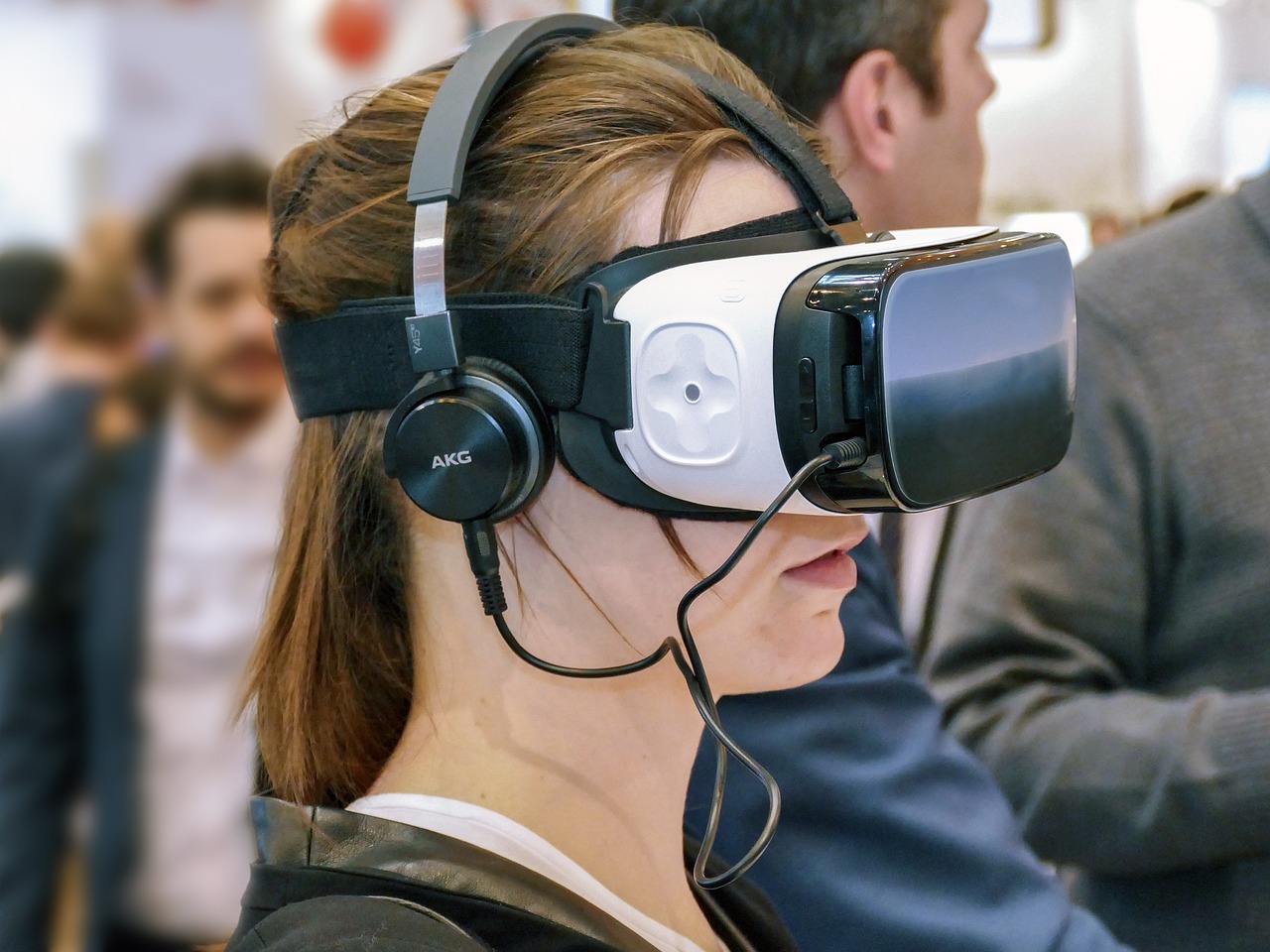
Expansion into E-commerce
The expansion of augmented reality (AR) into the e-commerce sector is nothing short of revolutionary. Imagine browsing your favorite online store and being able to visualize how a new piece of furniture would look in your living room, or trying on a pair of shoes without ever leaving your home. This is not just a dream; it's becoming a reality thanks to AR technology. E-commerce platforms are increasingly adopting AR to create immersive shopping experiences that bridge the gap between online and physical retail.
One of the most exciting aspects of AR in e-commerce is its ability to enhance the customer journey. Shoppers can interact with products in a way that was previously unimaginable. For instance, brands like IKEA have developed apps that allow customers to place 3D models of furniture in their own spaces using their smartphones. This not only helps customers make informed decisions but also reduces the chances of dissatisfaction after a purchase.
Moreover, AR provides a unique opportunity for brands to showcase their products in a more engaging manner. Instead of static images, customers can view products from all angles, zoom in to see details, and even see how different colors or styles would look on them. This level of interaction is crucial in the digital age, where consumers demand more than just a simple online shopping experience.
However, the integration of AR into e-commerce is not without its challenges. Retailers must ensure that their websites and apps can handle the additional data and functionality that AR requires. This often means investing in advanced technology and ensuring a seamless user experience. Additionally, the cost of developing AR features can be a barrier for smaller businesses. Yet, the potential benefits—such as increased customer engagement and higher conversion rates—often outweigh these challenges.
The future of AR in e-commerce looks promising. As technology continues to advance, we can expect even more innovative applications of AR, such as virtual showrooms and personalized shopping experiences powered by artificial intelligence. Imagine an online shopping platform that not only suggests products based on your browsing history but also uses AR to show how those products would fit into your life.
In conclusion, the expansion of augmented reality into e-commerce is transforming the way we shop online. By creating immersive and interactive experiences, AR is not only enhancing customer satisfaction but also driving sales and loyalty. As retailers continue to embrace this technology, the future of online shopping will undoubtedly be more engaging and personalized than ever before.
- What is augmented reality in e-commerce?
Augmented reality in e-commerce refers to the use of AR technology to enhance the online shopping experience, allowing customers to visualize products in their own environment before making a purchase. - How does AR improve customer satisfaction?
AR improves customer satisfaction by allowing shoppers to interact with products virtually, helping them make informed decisions and reducing the likelihood of returns. - Are there any challenges in implementing AR for retailers?
Yes, challenges include the cost of technology, the need for staff training, and ensuring that the AR features work seamlessly across different devices. - What does the future hold for AR in e-commerce?
The future of AR in e-commerce looks bright, with potential advancements in technology that could lead to even more personalized and immersive shopping experiences.
Frequently Asked Questions
- What is augmented reality (AR) in retail?
Augmented reality (AR) in retail is a technology that overlays digital information onto the real world, allowing customers to interact with products in a more immersive way. This can include visualizing how a piece of furniture would look in their living room or trying on clothes virtually before making a purchase.
- How does AR enhance the customer shopping experience?
AR enhances the shopping experience by providing interactive and engaging ways for customers to visualize products. For example, shoppers can see how clothing fits or how a product looks in their space, which helps them make informed decisions and increases overall satisfaction.
- What are virtual try-ons, and how do they work?
Virtual try-ons are AR solutions that allow customers to see how products like clothing, accessories, or makeup would look on them without needing to physically try them on. This technology uses a camera to project the product onto the user, providing a realistic representation that aids in their buying decision.
- Can AR help reduce return rates?
Yes! By allowing customers to visualize products accurately before purchasing, AR significantly decreases the likelihood of returns. This not only saves retailers time but also reduces costs associated with reverse logistics and restocking.
- How does AR drive sales and revenue in retail?
AR drives sales by creating unique and engaging shopping experiences that encourage impulse buying. Retailers can attract more customers through interactive marketing campaigns, leading to increased foot traffic and online visits, ultimately boosting sales and customer loyalty.
- What challenges do retailers face when implementing AR?
Retailers face several challenges when implementing AR, including high initial costs, technological limitations, and the need for staff training. These factors can impact the effectiveness of AR tools and require careful consideration before adoption.
- What is the future of AR in retail?
The future of AR in retail looks bright, with potential advancements such as integration with artificial intelligence, which could lead to more personalized shopping experiences. Additionally, the expansion of AR into e-commerce presents exciting opportunities for online retailers to offer immersive shopping experiences that rival those of physical stores.

